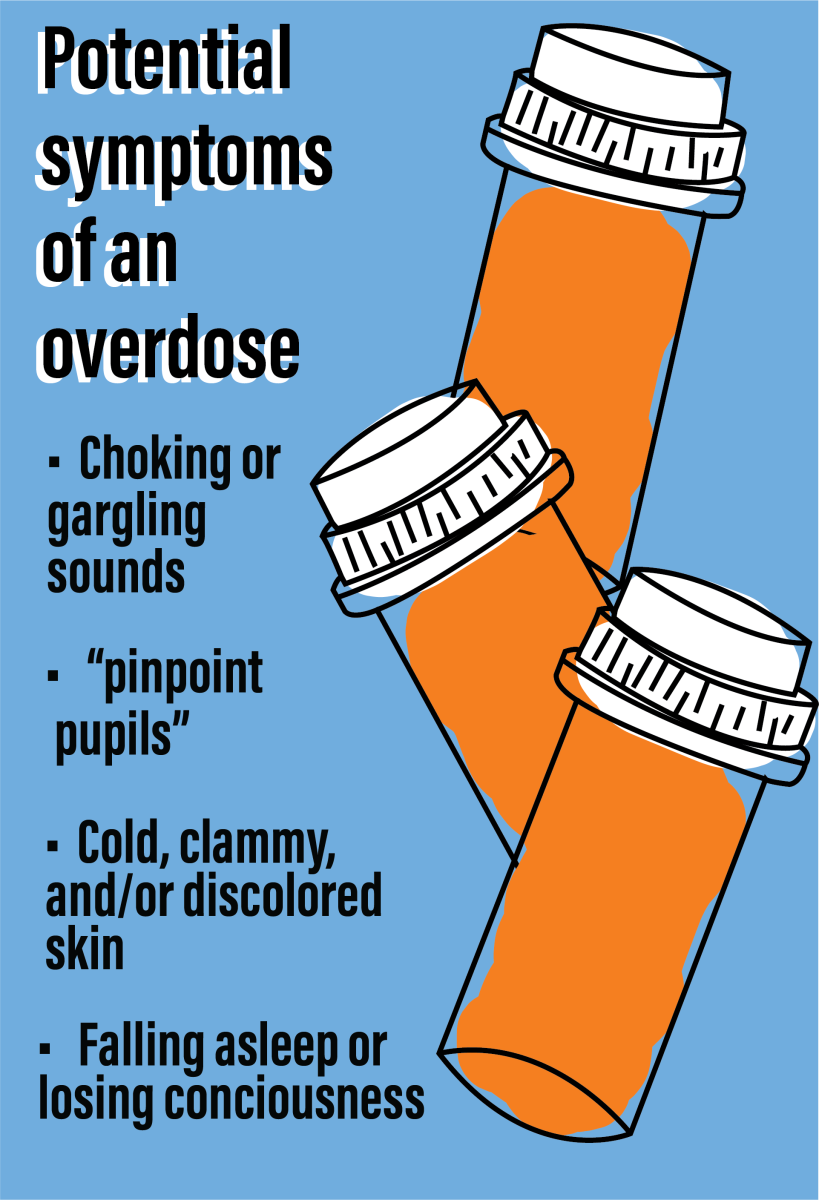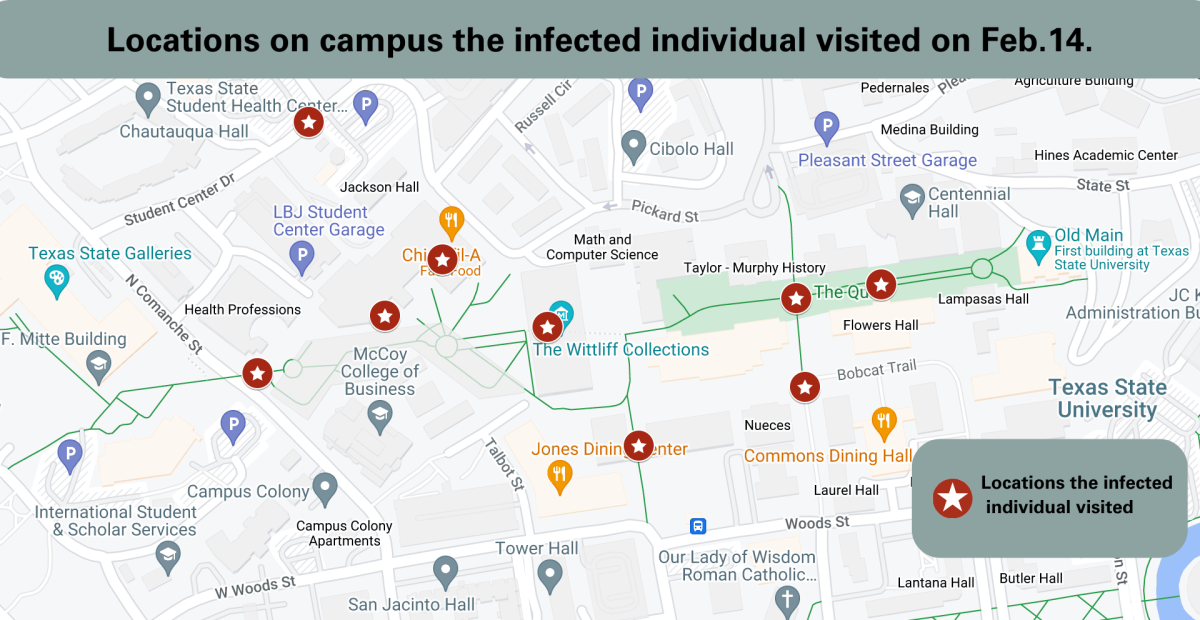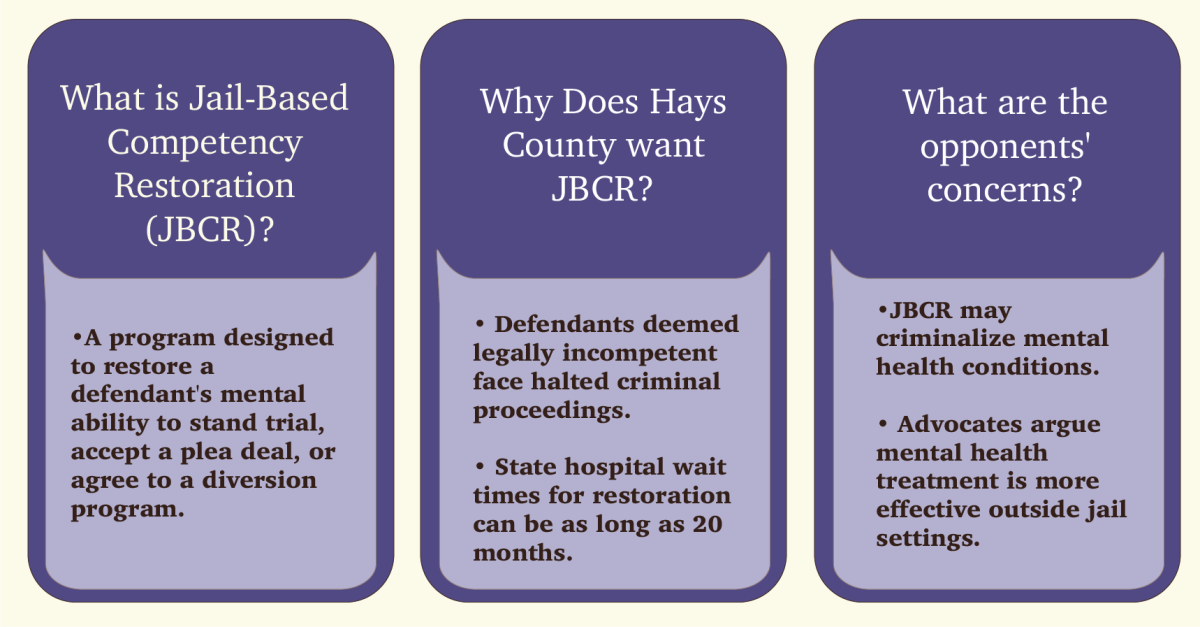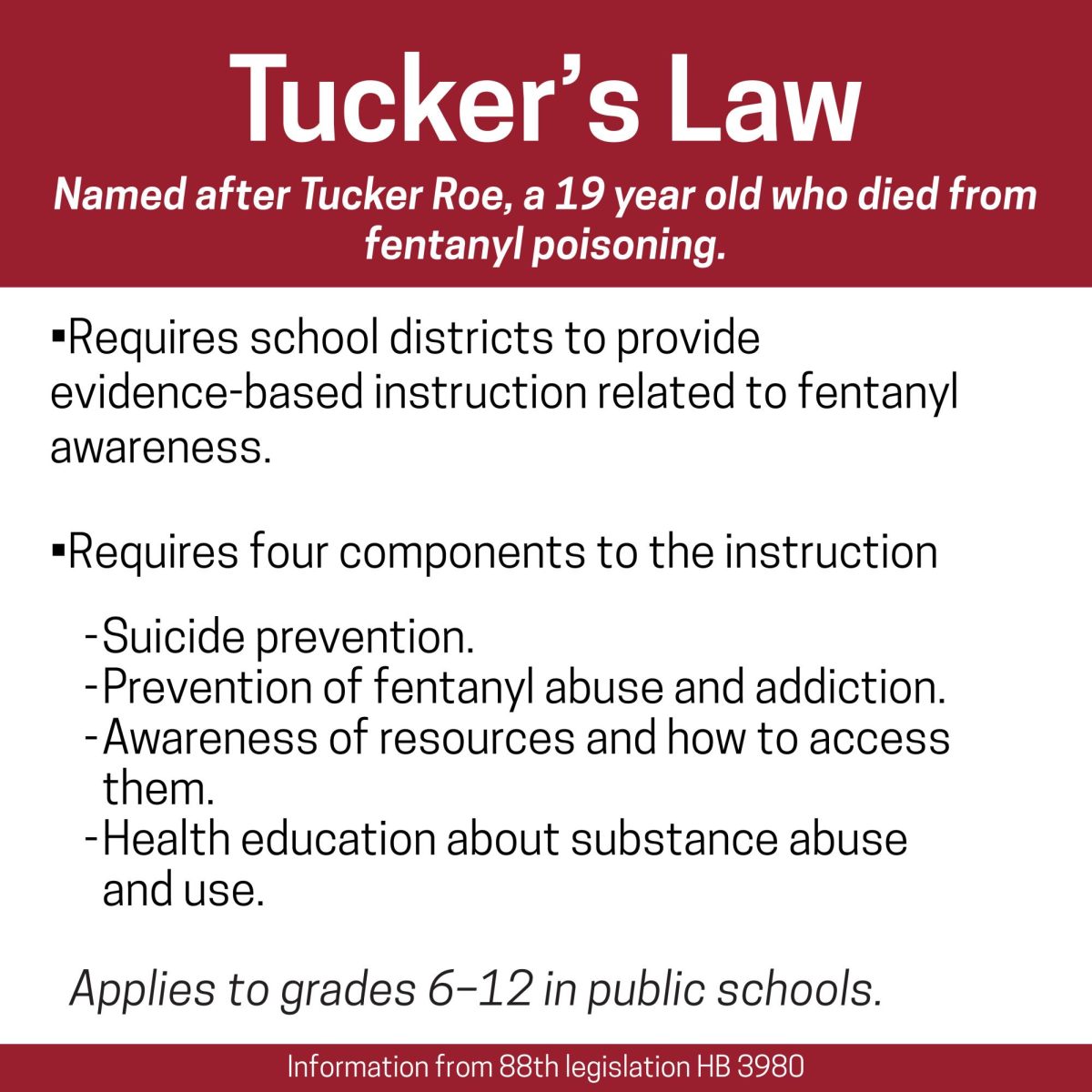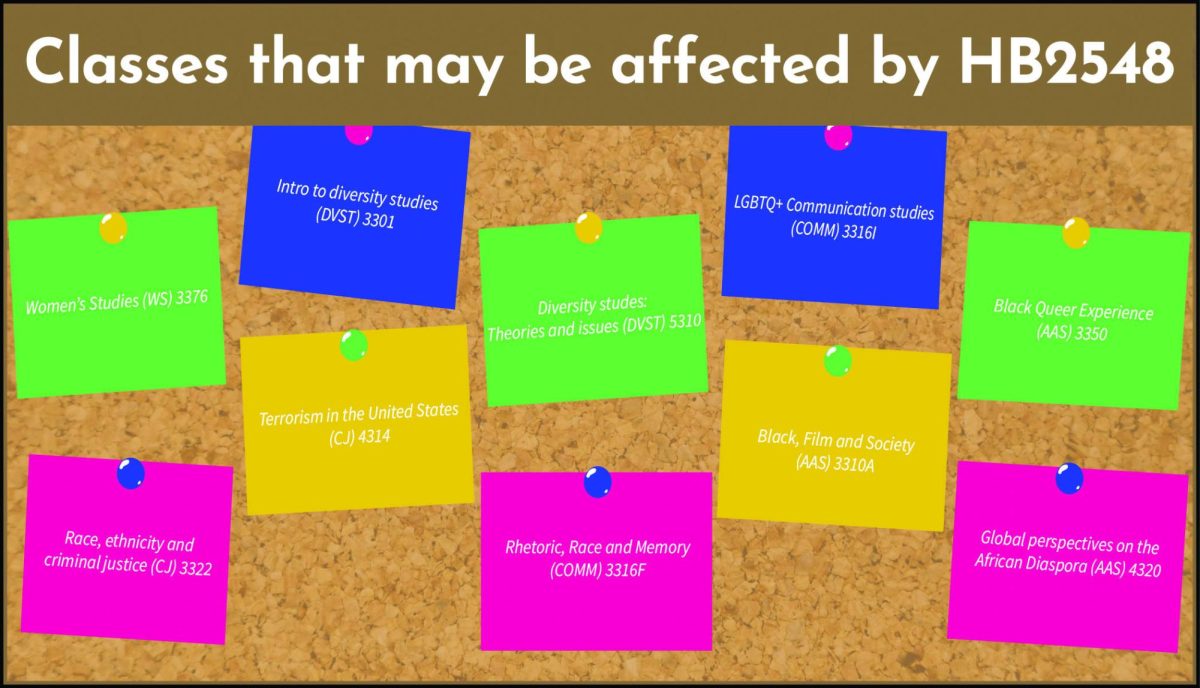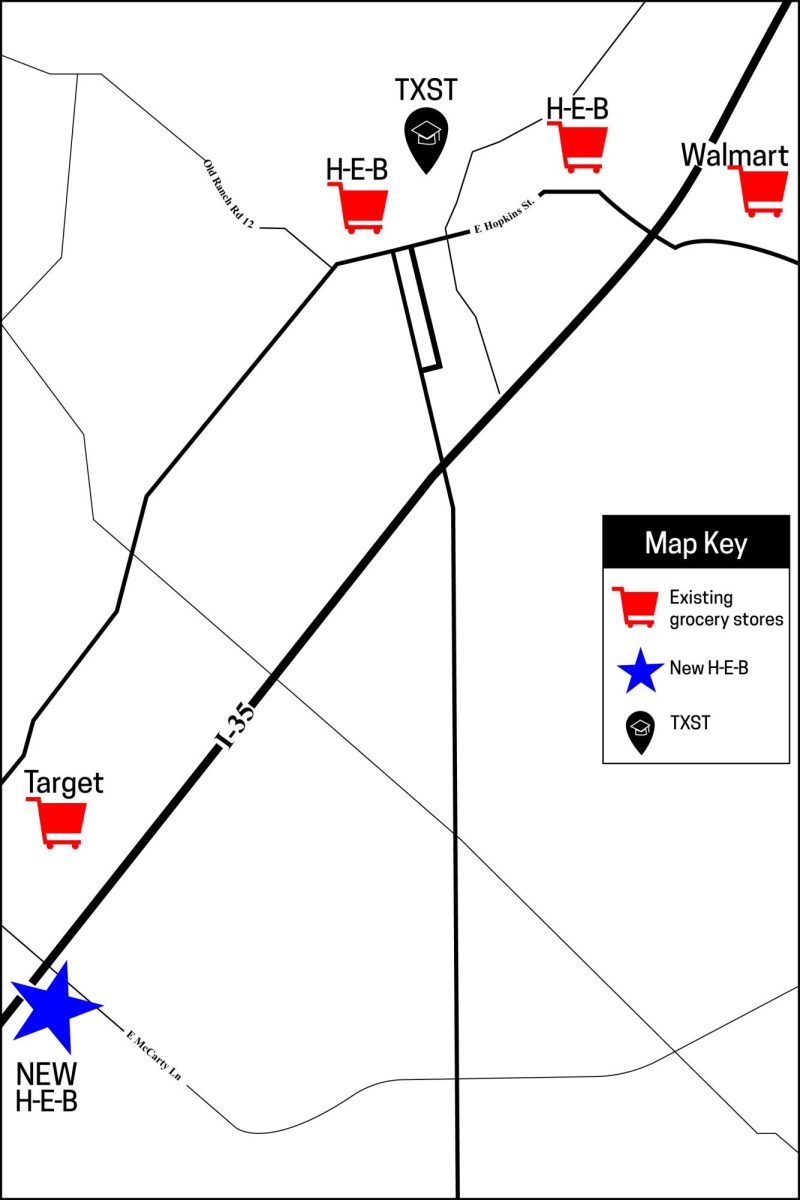The nationwide epidemic of fentanyl overdoses has hit close to home for students, as institutions serving the youth across the state have dealt with teen substance abuse issues that have led to the deaths of classmates.
According to Ty Schepis, a psychology professor who studies substance use and misuse, what makes fentanyl deadly is it’s potency as an opioid.
“Fentanyl is 100 times more potent than morphine, and morphine is a pretty potent opioid drug,” Schepis said.
Fentanyl can be found in many different aspects of the community. One way that people overdose is through taking other drugs that unknowingly have fentanyl laced in.
“People will sometimes get a prescription that they are told is a different opioid like oxycodone and as a cost saving measure and in an effort to make the drug more potent, someone who creates the drug will put a small amount of fentanyl in there,” Schepis said.
According to San Marcos Police Department Narcotics Sergeant Tommy Villanueva, a miniscule amount of fentanyl can cause overdose and people should be aware of the signs of an overdose.
“Someone will definitely have their breathing slow down. They will have a lack of response to any stimulus, their pupils will be constricted, their level of consciousness will decrease dramatically, shallow breathing, limp body, gurgling sounds and then pale blue skin tone or the lips turning blue,” Villanueva said. “Those are some physical signs of [an overdose].”
Hays County Independent School District (Hays CISD) has lost five students this school year, and Texas has seen a 89% increase in fentanyl-related overdoses from 2020 to 2021, which has led to a push for outreach and education for teens.
Dr. Emilio Carranco, the director of the Student Health Center, stresses the importance of education in the battle, like campus-wide educational campaigns to make students and parents aware of the risks of taking drugs not prescribed to them and the warning signs that someone could display.
“What we’ve seen since about 2017 is a very steady increase in opioid overdose and death. And that is being driven a lot by the use of fentanyl to lace a lot of these,” Carranco said. “I think it is important for us to educate our students.”
According to Hays CISD, four students died of overdoses from fentanyl over last summer. With the school year ending shortly, the county is hosting fentanyl awareness assemblies to try to not repeat history from last year.
Texas State is also trying to use its resources to educate the student body through campaigns and trainings.
“We’re responding here by first off promoting a campaign on our campus to try to get the word out of people to be careful about this. You may think it’s a cheap high, but the consequences could be dramatic,” President Kelly Damphousse said. “But we’re also training our RAs and our police officers to recognize what a fentanyl overdose looks like.”
The campaign is Governor Greg Abbott’s “One Pill Kills”, which promotes amending laws surrounding the classification of the opioid and criminal charges, anti-fentanyl public awareness and making Naloxone, a nasal spray that serves as an opioid antagonist that can reverse an overdose, more available for the public.
According to Schepis, once a user is in an overdose, there is no solution for the user other than to call emergency services.
“The best way to be prepared and to be ahead is to have Naloxone,” Schepis said. “Having Naloxone on hand can be the difference between someone living and dying because the individual can get what they need to reverse the overdose and resume normal breathing.”
Naloxone can be found in most pharmacies, but is also always on every single University Police officer, and they have training to ensure the proper use of it, according to University Police Department (UPD) Chief Matthew Carmichael.
“Everybody, not just our police officers, but our public safety officers, our new student security program that we’re doing with student government, they’re all going to be trained because they’ll be out in the field,” Carmichael said.
Besides Naloxone, UPD officers are trained in drug awareness, CPR and first aid to help provide assistance to people who may be experiencing an overdose.
Even with the implementation by the university for prevention, training, assessment, counseling, treatment and referral services for the community, according to the Clery report, there were still 117 drug law violation arrests and 65 drug law violation referrals for disciplinary action on-campus in 2021.
The report also shows a decline every year for the past three in drug violation arrests on the San Marcos campus, from 225 in 2019 to 117 in 2021. Even with the descending number, it is recommended that citizens of Hays County stay vigilant and educated on the topic of fentanyl overdoses.
“We’ve been fortunate not to have overdoses result in deaths on our campus,” Damphousse said. “But you can’t rest on your laurels. We have to keep training people and we have to keep getting the word out to people and hopefully they make wise decisions.”
Categories:
Fentanyl overdoses leads to increased efforts by Texas State
Blake Leschber, News Editor & Dillon Strine, News Contributor
May 10, 2023
0
Donate to The University Star
Your donation will support the student journalists of Texas State University. Your contribution will allow us to purchase equipment and cover our annual website hosting costs.
More to Discover



